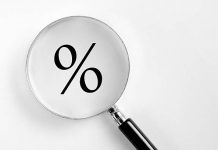Last week’s economic data from the UK covered a wide range of aspects crucial for the Bank of England as it meets this week. Overall, economic data continued to point a mixed picture offering no clarity for officials as they decide on interest rates this week.
UK Inflation steady at 2.4%
Inflation data released last week showed that consumer prices were stable at 2.4% on the year ending May 2018. This was the same pace of increase registered in the month before. Most of the gains in inflation came from higher oil prices. The 2.4% inflation rate was incidentally the lowest inflation rate since March 2017.
On a month over month basis, consumer prices were seen rising 0.4% in May which matched the median estimates. Core consumer prices that exclude the volatile food and energy prices were seen rising at a pace of 2.1% on the year.
In comparison, the data showed that the increase in headline inflation came on account of higher fuel prices. The increase in fuel prices led to higher transportation costs as prices of air fares and ferry prices increased as a result.
Offsetting the higher fuel prices was the fact that there were price declines in other sectors such as computer games.
Based on the inflation data, some analysts noted that in the backdrop of a weakening economy, the August rate hike was likely questionable.
Output inflation was also seen rising with prices picking up for the first time since November 2017. On an annualized basis, output price inflation was seen rising 2.9% and rising from 2.5% the month before.
Prices registered a steady increase of 0.4% which beat estimates of a 0.3% increase. Input price inflation was seen rising 9.2% in the year ending May which was higher than the 5.6% increase registered the month before. Economists forecast that input price inflation would rise 7.6%.
Retail sales rises on warm weather
In another economic report released this week, which covers the health of consumer spending, data showed that retail sales in the UK had picked up, largely on account of the warm weather and the Royal wedding.
Retail sales on a volume basis including auto fuels were seen rising 1.3% on a month over month basis. This came amid April’s revised retail sales report that showed a 1.8% increase. The data marked a second consecutive month of increase in retail sales as the data beat estimates of a 0.5% increase.
Excluding auto fuel, retail sales increased 1.3% on the month which was slightly slower than the 1.4% increase seen previously. Economists had expected to see the core retail sales rising just 0.3% on a month over month basis.
Sales at food stores increased 1.1% while non-food store sales grew 0.7%.
The three months ending May saw retail sales rising 0.9%.
Retailers said that the sustained warm weather along with the Royal wedding celebrations had encouraged consumers to spend on food and household stores during the month.
The data comes amid real wages seen increasing modestly as the UK’s inflation rate was seen being stable. On the whole, retail sales growth was seen advancing 3.9% in May compared to the same period the year before. This beat estimates that predicted a 2.4% increase.
UK’s unemployment rate stays lows
The labor market data released last week showed that the unemployment rate was steady at 4.2%. This marked the lowest unemployment rate in the UK since 1975. The UK was seen having 1.4 million unemployed which was seen to be 38,000 fewer compared to the November 2017 through December 2018 period.
Wage growth was seen rising 2.5% including bonuses while excluding bonuses, wage growth increased 2.8%. With the UK’s inflation rate seen at 2.4%, real wages were seen rising just 0.1%













